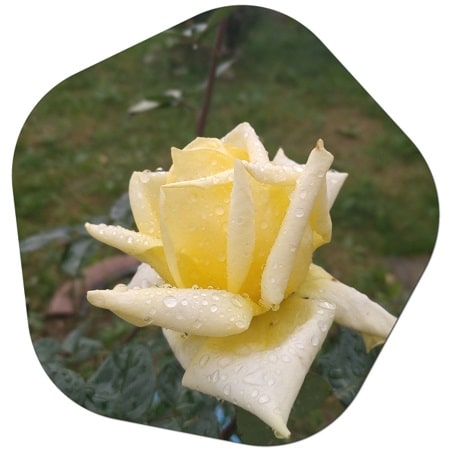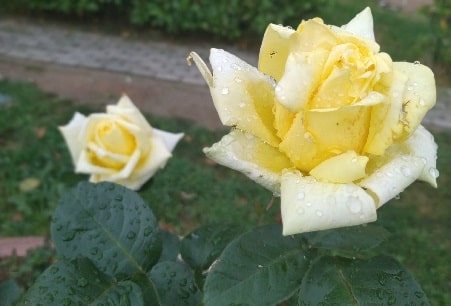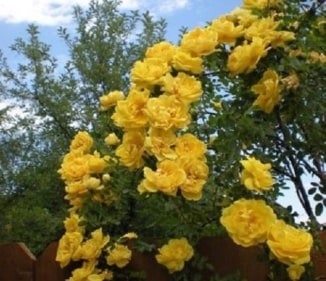Yellow roses can be found in various countries around the world. Roses come in a wide range of colors, including yellow, and they are cultivated and grown in many different regions for their beauty and symbolism. Yellow roses are often associated with friendship, joy, and warmth. Here are some countries where yellow roses are commonly found:
- United States: Yellow roses are widely grown and enjoyed in the United States. They are popular in gardens, floral arrangements, and as gifts for various occasions.
- Ecuador: Ecuador is renowned for its rose production, and yellow roses are among the varieties cultivated and exported from the country. Ecuadorian roses are known for their large blooms and long vase life.
- Colombia: Colombia is another major exporter of roses, including yellow roses. The country’s favorable climate and high-altitude regions make it an ideal location for rose cultivation.
- Netherlands: The Netherlands is known for its thriving flower industry, and yellow roses are grown and exported from this country as well. Dutch roses are prized for their quality and are shipped worldwide.
- Kenya: Kenya has emerged as a significant producer and exporter of roses, including yellow roses. The country’s favorable climate and advanced horticultural practices have contributed to its rose industry’s growth.
- India: In India, yellow roses are grown in various regions and are used in religious ceremonies, weddings, and floral arrangements. They hold cultural and symbolic significance in Indian traditions.
- Yellow roses Turkey: Yellow roses are indeed available in Turkey. Turkey has a rich tradition of rose cultivation and is known for its diverse range of rose varieties, including yellow roses. The country has favorable growing conditions for roses, particularly in regions such as Isparta, where rose cultivation is a significant industry. One famous yellow rose variety associated with Turkey is the “Golden Celebration” rose, known for its large, fragrant, and deeply yellow blooms. This variety, along with other yellow rose varieties, can be found in Turkish gardens, nurseries, and floral markets. If you’re in Turkey and interested in acquiring yellow roses, I recommend visiting local flower shops, garden centers, or contacting online floral retailers that offer flower delivery services. They can provide you with a selection of yellow rose varieties and assist you in obtaining them for your desired purposes or occasions.

These are just a few examples of countries where yellow roses are commonly found. The cultivation and availability of yellow roses can vary depending on the region, local climate, and the global flower market.
Where do yellow roses grow best?
Yellow roses can grow well in various regions, provided they receive the right growing conditions. Here are some factors that contribute to the successful growth of yellow roses:
- Sunlight: Yellow roses thrive in full sun exposure, ideally receiving at least 6-8 hours of direct sunlight each day. Ample sunlight helps promote healthy growth, vibrant blooms, and overall plant vigor.
- Climate: Yellow roses can adapt to a range of climates, but they generally prefer moderate to warm climates. They tend to thrive in regions with mild winters and warm summers. However, there are also varieties bred specifically for colder climates.
- Soil: Well-draining soil is essential for the successful growth of yellow roses. The soil should have good water retention capacity while allowing excess water to drain away. Roses prefer a slightly acidic to neutral soil pH, typically between 6.0 and 7.0.
- Watering: Yellow roses require regular watering to keep the soil moist but not overly saturated. Water deeply at the base of the plants, preferably in the morning, allowing the soil to dry out slightly between waterings.
- Fertilization: Regular feeding with a balanced rose fertilizer helps provide essential nutrients for healthy growth and abundant blooms. Follow the manufacturer’s instructions for the appropriate timing and dosage.
- Pruning: Pruning plays a crucial role in shaping and maintaining yellow rose plants. Prune in early spring to remove dead or damaged wood and promote new growth. Pruning also helps maintain an open structure for good air circulation.
- Disease and Pest Control: Yellow roses can be susceptible to certain diseases and pests, such as black spot, powdery mildew, aphids, and thrips. Regular monitoring, proper sanitation, and appropriate preventive measures, such as using organic or chemical controls when necessary, can help keep them in check.

It’s important to note that specific rose varieties may have their own preferences and requirements for optimal growth. Consulting with local gardening experts or rose enthusiasts in your specific region can provide valuable insights on the best yellow rose varieties suited for your climate and conditions.
Can you get yellow roses?
As an AI language model, I don’t have the capability to physically acquire or deliver items such as flowers. I exist purely as a text-based interface and provide information and assistance through text-based responses.
If you’re interested in obtaining yellow roses, I recommend checking with local florists, garden centers, or online flower delivery services. They can assist you in finding and purchasing yellow roses for various occasions or purposes. Many floral retailers offer a wide variety of rose options, including yellow roses, which can be delivered to your desired location.
Remember to consider the availability of yellow roses based on your location, seasonal factors, and local florist offerings. It’s always a good idea to contact the floral service provider directly for the most up-to-date information on their product availability and delivery options.
When yellow roses bloom
Yellow roses typically bloom during the spring and summer months, although the exact timing can vary depending on the specific variety and growing conditions. In general, roses are known for their beautiful blooms from late spring to early summer, with some varieties continuing to produce flowers throughout the summer and into the fall.
The specific blooming period for yellow roses can also be influenced by factors such as the local climate, weather patterns, and the care provided to the plants. Adequate sunlight, proper watering, regular fertilization, and diligent pruning can all contribute to healthy growth and abundant blooming.
To get the most accurate information about when a particular yellow rose variety blooms in your specific location, it is best to consult with local rose experts, garden centers, or nurseries. They can provide insights specific to your region and offer guidance on selecting yellow rose varieties that will thrive and bloom well in your area. Information about yellow roses >>
What are Yellow Rose Varieties? Names of Yellow Roses
There are numerous yellow rose varieties available, each with its own unique characteristics. Here are some popular yellow rose varieties:
- ‘Graham Thomas’: A vigorous and highly fragrant English rose with large, cup-shaped, buttery yellow blooms.
- ‘Julia Child’: This floribunda rose features bright yellow, double blooms with a slight fragrance and excellent disease resistance.
- ‘Golden Celebration’: A David Austin rose known for its large, deeply cupped, rich yellow flowers with a strong, fruity fragrance.
- ‘Peace’: A classic hybrid tea rose with large, high-centered, yellow blooms edged with pink. It has a sweet fragrance.
- ‘Mister Lincoln’: While primarily known for its deep red color, ‘Mister Lincoln’ also produces yellow-toned buds that open into red roses.
- ‘Sunsprite’: A vibrant and disease-resistant floribunda rose with small, bright yellow, double blooms and a slight fragrance.
- ‘Golden Showers’: A climbing rose that produces clusters of bright yellow, double blooms with a mild fragrance.
- ‘Teasing Georgia’: Another David Austin rose with fully double, cupped, lemon-yellow flowers that have a strong, tea rose fragrance.
- ‘Chrysler Imperial’: Similar to ‘Mister Lincoln,’ ‘Chrysler Imperial’ is mostly recognized for its deep red blooms, but it occasionally produces yellow flowers.
- ‘Molineux’: A repeat-flowering David Austin rose with medium-sized, fully double, soft yellow blooms and a fruity fragrance.
These are just a few examples of the many yellow rose varieties available. When choosing a yellow rose for your garden, consider factors such as bloom form, fragrance, disease resistance, and growth habit to find the variety that best suits your preferences and growing conditions.
Diseases of yellow roses
Yellow roses, like other rose varieties, can be susceptible to various diseases. It’s important to be aware of these diseases and take preventive measures to keep your roses healthy. Here are some common diseases that can affect yellow roses:
- Black Spot (Diplocarpon rosae): Black spot is a fungal disease characterized by black or dark brown spots on the leaves. It can weaken the plant and defoliate it if left untreated.
- Powdery Mildew (Sphaerotheca pannosa): Powdery mildew appears as a white, powdery coating on the leaves, stems, and buds. It can hinder photosynthesis and lead to distorted growth if not controlled.
- Rust (Phragmidium spp.): Rust is a fungal disease that causes orange or rusty-colored spots on the undersides of leaves. It can weaken the plant and cause defoliation.
- Rose Rosette Disease: Rose rosette disease is caused by a virus transmitted by a tiny mite. Symptoms include excessive thorniness, distorted growth, and reddish coloration of leaves. Infected plants usually need to be removed and destroyed to prevent further spread.
- Botrytis Blight (Botrytis cinerea): Botrytis blight, also known as gray mold, is a fungal disease that causes gray-brown fuzzy growth on flowers, stems, and buds. It can lead to rot and decay of plant tissues.
- Crown Gall (Agrobacterium tumefaciens): Crown gall is caused by a bacterial infection that forms swollen, tumor-like growths on the plant’s roots, stems, or crown. It can weaken the plant and impede its growth.

To manage and prevent these diseases, it’s important to practice good rose care techniques. This includes proper watering (avoiding overhead watering), providing adequate air circulation, maintaining clean garden beds, regular pruning to remove diseased parts, and applying appropriate fungicides or treatments as recommended by local gardening experts or horticulturists.
It’s worth noting that disease resistance can vary among rose varieties, so choosing disease-resistant yellow rose cultivars can help minimize the risk of infection. Additionally, staying vigilant and promptly addressing any signs of disease can help prevent the spread and damage to your yellow roses. In which countries do yellow roses grow? Motherland of the Yellow Rose >>
